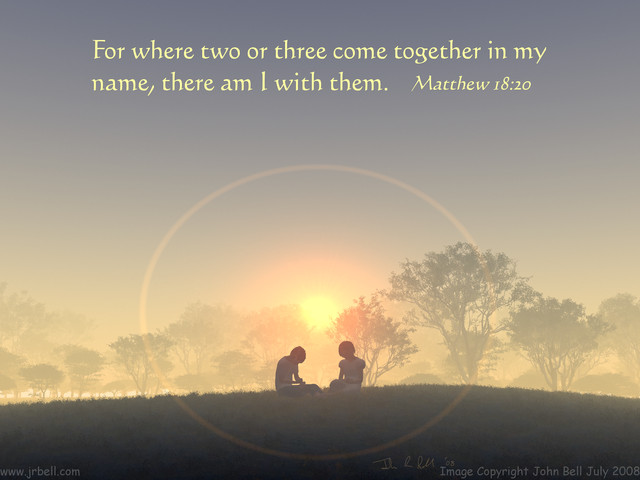Before I knew the below information, I put up a tree and the various decorations for Christmas but after hearing much historical proof and doing some reading; I chose not to have a Christmas Tree and feel convicted about other forms of decor during this season in my home. At this time, although it is not Jesus' birth, I will continue to celebrate this just because it is lifting him up. I will also continue to enjoy time with my family and friends praying that I will be able to let the light of Jesus to shine through me. Please read the below articles I got from another website. It is a real eye opener. Also, I have included some Youtubes re this subject below these articles.
#1) December 25th Was Baal’s Birthday Before It Was Celebrated As Christmas
Most Christians get quite offended when you try to tell them that December 25th is not a Christian holiday. They just don't understand. The truth is that it is a very ancient pagan holiday, and most of the Christmas traditions of today can be directly traced back to pagan practices. For example, have you ever heard of a story where a heroic supernatural figure visits an evergreen tree on December 25th to leave gifts? Does that sound familiar? Does the name Santa Claus ring a bell? Well, the reality is that it goes back a lot farther than that. It actually goes all the way back to ancient Babylon. According to ancient Babylonian tradition, Semiramis (who eventually became known as the goddess Asherah/Ashtoreth/Isis/Ishtar/Easter in other religions) claimed that her son Nimrod had been reincarnated in the form of a full grown evergreen tree that sprang up overnight from a dead tree stump. Semiramis also claimed that Nimrod would visit the evergreen tree and leave gifts each year on the anniversary of his birth, which just happened to be on December 25th. Yes, this story seems a bit weird and contradictory, but that is often the case with ancient pagan religions. Out of this story came the tradition for pagans to go out to the holy "groves" and leave gifts for Nimrod (who was later worshipped as "Baal") at an evergreen tree. Does that sound "Christian" to you? In fact, have you ever wondered where the word Christmas actually comes from? The word "Christmas" is actually not found anywhere in the Bible. In fact, the word "Christmas" was not even invented until the Middle Ages. The Catholic Encyclopedia makes this stunning admission: "The word for Christmas in late Old English is Cristes Maesse, the Mass of Christ, first found in 1038." That means that the word "Christmas" did not even exist until more than a thousand years after the death of Yahshua (Jesus). Yet most American Christians will gather around "the Christmas tree" on December 25th without having any idea why they keep this tradition or where it originally came from. The truth is that the Christmas tree and the decorations that they put on the Christmas tree have ancient roots in pagan fertility traditions. In ancient times, the goddess Asherah/Ashtoreth was known as the "Queen of Heaven". She was worshipped by many ancient civilizations throughout the Middle East. One of the symbols most closely associated with Asherah/Ashtoreth was a tree. The ancient Canaanites and Phoenicians viewed the tree as a symbol of fertility. A symbol of male fertility. This is not a joke. Sadly this is all very real. The purpose of the fertility tree in ancient times was to display the symbols of fertility. The pole, balls, and tinsel (phallus, testes, semen) represented various aspects of male fertility, while wreaths were always made in a circle to represent female fertility. That sure puts a different spin on things, now doesn't it? But isn't all of this supposed to be "Christian"? The truth is that the Bible does not say a thing about a "Christmas tree", but it does warn God's people against putting up trees like the other pagan nations were doing. In Jeremiah 10:1-4 we read this: Hear what the LORD says to you, O house of Israel. This is what the LORD says: "Do not learn the ways of the nations or be terrified by signs in the sky, though the nations are terrified by them. For the customs of the peoples are worthless; they cut a tree out of the forest, and a craftsman shapes it with his chisel. They adorn it with silver and gold; they fasten it with hammer and nails so it will not totter." The truth can be shocking, eh? But most people simply do not know these things. Most people believe that December 25th first became a holiday when Catholics decided to make that day the celebration of the birth of Christ. But that is simply not true. Long before Christmas was ever invented, December 25th was known as "the birthday of the unconquered sun" and it was celebrated as the birthday of pagan gods such as Baal, Mithras, Attis, Sol, Jupiter, Dionysus and others. When the Catholics came along and decided to make it a Christian holiday in the fourth century, they simply adopted a pagan holiday and kept many of the same pagan practices. Another ancient name for the late December holiday is Yule. Yule is the name of a major pagan holiday that is still celebrated today by huge numbers of people around the world. In fact, a major U.K. newspaper ran this headline last winter: Ancient Yule festivals lie behind much of our British Christmas. Yule was celebrated by the pagans of northern Europe from late December through early January for centuries. When you offer "yuletide" greetings you are acknowledging this pagan celebration. Yule logs were traditionally lit to honor the horrible pagan god "Thor". The holiday would continue until the Yule log burned out, which could take as long as twelve days. This is where we get the so-called "12 days of Christmas". Even an early form of Santa Claus can all be traced back to ancient Yule celebrations. In fact, pagan, Wiccans and witches still celebrate Yule to this day. They laugh and laugh at Christians who use the pagan word Yule. The following was taken from a website on witchcraft: ----- Birthday of the Twins: Kemetic (ancient Egyptian) holy day. Birthday of the Twins, Heru Sa Aset and Bast, children of Aset [Isis]. Origin of Yule and Christmas. On Winter Solstice Asar [Osiris] dies. Aset [Isis] with the magick help of Nebt Het [Nephthys] creates a Djed Pillar [artificial penis] for Her husband and impregnates Herself. For three full days (December 22-24) Asar lies dead and the Twins grow in Aset’s belly. On this day (December 25th) the Twins are born, the reincarnation or resurrection of Their Father. The green tree is a symbol of the green-skinned Asar, God of fertility and vegetation. The colored lights are symbols of Aset, Goddess of magick and divine light. Red, green, and white are the traditional candle colors of Bast (this was Her birthday alone for several thousand years of early Kemetic history), later being adapted to red for Aset (the color of the Mother’s menstrual flow), green for Asar (the color of vegetation), and white for the Twins (the color of pure light). ----- Another one of the pre-Christian pagan festivals of late December was called Saturnalia. Saturnalia was a holiday during which the Romans commemorated the dedication of the temple of their god Saturn. This festival began on the 17th of December and it would last for a whole week until the 23rd of December. Green ivy and holly were common symbols of "Saturn", the Roman deity. So why do Christians put them up in their houses? Later on, the Romans also started holding a festival on December 25th called Dies Natalis Solis Invicti, which means "the birthday of the unconquered sun." It was held to honor the birth of the sun god. In the year 350 A.D., Pope Julius I declared that "Christ’s birth" would be celebrated on December 25th from then on. As we discussed earlier, Christians incorporated many of the previously existing pagan practices and traditions into their new holiday. Apparently the Pope's rationale at the time was that he was trying to make it easier for pagan Romans to convert to Christianity. But the historical Jesus was not born on December 25th. It simply would have been far too cold for shepherds to be out with their sheep at night during that time. So when was Jesus actually born.
#2) Was Jesus Born During The Feast Of Tabernacles And Not On Christmas?
In a previous article we alluded to the fact that Yahshua (Jesus) was almost certainly born during the Feast of Tabernacles. But is there any evidence for this? Is there any evidence that Jesus was not born on December 25th? The truth is that the vast majority of both Christians and non-Christians are shocked when you tell them that Yahshua (Jesus) was not born anywhere near December 25th. In fact, the word "Christmas" is not anywhere in the Bible, and neither are "Christmas trees" or "Christmas presents". So what does the Bible say about when Yahshua (Jesus) was born? Well, our research has uncovered some stunning truths about Christmas, and we have presented those findings in a short YouTube video entitled: "Proof That Jesus Christ Was NOT Born On December 25th". The video is embedded at the end of this post, and we hope that you will watch it and send it to others as well. Our YouTube video examines the following questions: *Wouldn't it have been way too cold for the shepherds to be out with their flocks at night in late December? *Can we prove from the Scriptures that Yahshua (Jesus) was NOT born during the winter? *Do the Scriptures give us any information about when Yahshua (Jesus) actually was born? *Was there a real historical reason why the inns were full when Mary and Joseph were looking for a place to stay? *Was there a festival that was instituted by the Lord God over a thousand years before Yahshua(Jesus) was born that prophetically foreshadowed the circumstances and timing of His birth? The truth is that there is a whole lot about the birth of Yahshua (Jesus) that you were never taught in church. So if Yahshua (Jesus) was not born on December 25th, then why do Christians celebrate that day? The truth might shock you. The reality is that there was a late December pagan holiday that was celebrated for centuries before Yahshua(Jesus) was ever born. This pagan holiday that commemorated the birth of various pagan "gods" was celebrated throughout the Roman Empire in different forms. In fact, many of the "Christmas traditions" of today can be directly traced to pagan religious practices that pre-date Christ. The Roman Catholics decided to "christianize" this pagan holiday starting in 336 A.D. and turn it into a celebration of the birth of Christ. But they also kept many of the same traditions and practices from the pagan festivals.
Santa Clause:
May we have a blessed time with our families as we lift up Jesus during this season and in 2011.
Blessings
C
 .
.














 .
. 


























.jpg)












